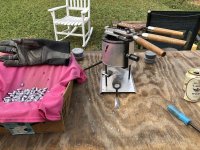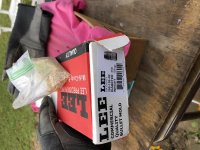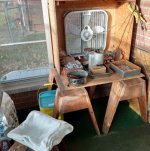Casual Smith Nut
Member
I’m waiting on my next couple of ingots to melt down and thought I’d share. It’s a great day to cast. Upper 50s temperature outside here in GA with a slight breeze to keep the air moving.
Here’s my humble casting setup using a Lee pot. The ingots are muffin pan donors that I picked up somewhere sometime back and are on lower end of BHN using the fingernail test. I’m a big fan of the muffin size as my pot is just right for 2 muffins when casting. Any more ingots and I get a lot of splash when dropping in the sprue or throw back bullets before the mold gets up to temp.
It’s a good day. The mold is cooperating nicely to drop clean 158gr bullets without much tapping or difficulty. Y’all can see my hi tech flux material also.
Let’s see the “casting setups.”
Here’s my humble casting setup using a Lee pot. The ingots are muffin pan donors that I picked up somewhere sometime back and are on lower end of BHN using the fingernail test. I’m a big fan of the muffin size as my pot is just right for 2 muffins when casting. Any more ingots and I get a lot of splash when dropping in the sprue or throw back bullets before the mold gets up to temp.
It’s a good day. The mold is cooperating nicely to drop clean 158gr bullets without much tapping or difficulty. Y’all can see my hi tech flux material also.
Let’s see the “casting setups.”













